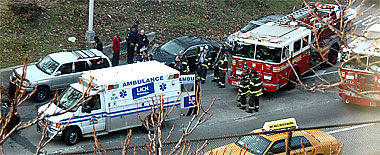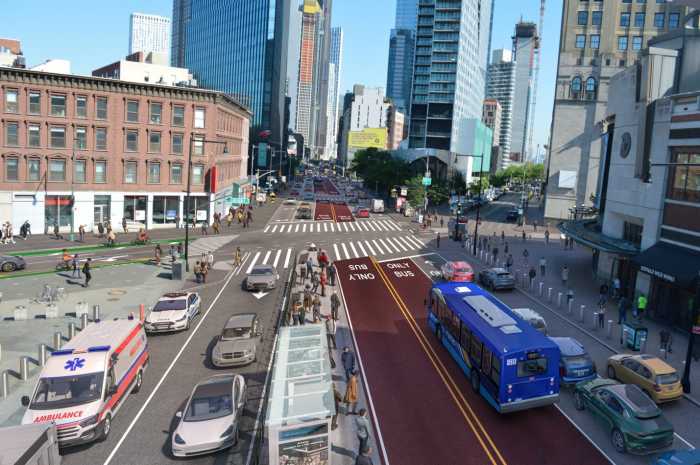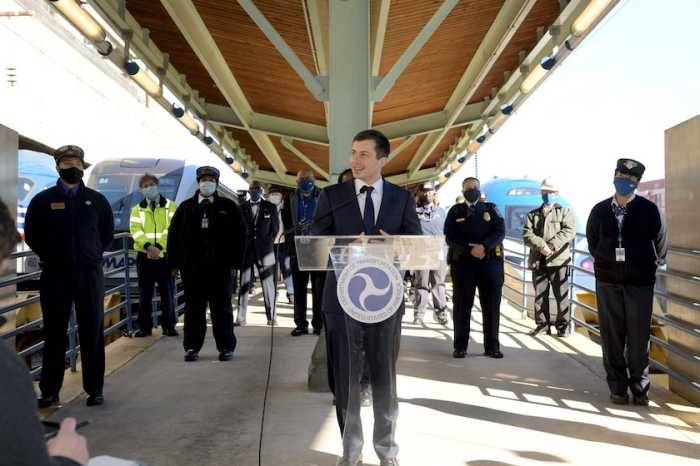It’s official — the Brooklyn–Queens Expressway on-ramp at Congress Street is one of the most dangerous in the state.
Anecdotally, of course, the Cobble Hill interchange is notorious — one man has even created a blog to monitor the all-too-frequent collisions there.
But after The Brooklyn Paper began an investigation that revealed the dangers of the substandard on-ramp, state officials now say they will, for the first time, put the ramp on their forthcoming list of the most dangerous roadways in the entire Empire State.
“We recognize that it has what we call ‘non-standard’ features,” said state Department of Transportation spokesman Adam Levine.
Photographs from local rubbernecker-turned-blogger Werner Cohn put those flaws into stark relief, showing crashes that occurred because of the lack of an acceleration lane for drivers entering the westbound BQE just south of Atlantic Avenue.
• BOOM: Jan. 8: At least three fire-trucks and an ambulance rush to the scene after a major collision.

• BANG: Dec. 22, 2007: A minivan rear-ends an SUV, as both were entering from the cursed on-ramp.
• CRASH: Oct. 24, 2007: A tractor-trailer jackknifes onto the highway, cutting off one lane of traffic, because it can’t handle the curving entrance path.
And those are just three examples.
There were 113 crashes reported in 2005 and 2006, the last state study period. Countless other collisions went unreported, so they were not part of that study.
The 113 crashes are six times higher than the state average for comparable highways, state transportation officials said.
Cohn confirmed that the on-ramp is an almost-daily problem with a long history.

“It’s been a problem since it was built, but we didn’t have the kind of traffic we have today.” Cohn said.
In fact, it’s a problem by design.
State officials say there is literally zero feet after the stop sign for drivers to accelerate to the 45-mph speed limit before merging with three lanes of traffic, which often speeds towards Hamilton Avenue at well above the legal limit.
Federal highway standards say that such an entrance actually needs to be 350–720 feet long, though those standards were developed after the BQE was completed in 1964.
Local drivers are well aware of the risk they take every time they get behind the wheel.
“I’ve never gotten in an accident, but it makes me nervous,” said Erin Hall, who lives on Columbia Street.

“The traffic is speedy there and it’s hard to tell what lane the cars are in, so I’m always really cautious.”
She has good reason to be on the safe side.
Aside from Cohn’s advocacy for increasing safety, the NYPD has asked the DOT to improve the problematic ramp, according to Levine.
Building a better entrance for the 6,000 vehicles that use it every day would require a major engineering feat because of a nearby bridge overpass. That’s why Cohn thinks the ramp should just be closed, even if that creates a new nuisance.
“If you can save a single life, all that inconvenience is worth it,” he said.
The state considered that option, but ruled it out.

“There’s a hospital near there — and farther south, there are not enough full-time entrance ramps in that area,” said Levine.






















